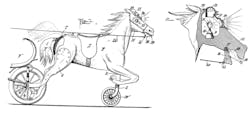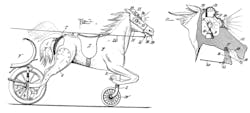Horseless to Humanless: The Electrification of Vehicle Technology (.PDF Download)
Although it was largely unnoticed by the public, 2017 marked the start of perhaps the biggest shift in day-to-day transportation since large-scale manufacturing of cars began in 1901. That was when Audi introduced the A8, which was claimed to be the first vehicle capable of SAE Level 3 autonomous operation. Why is this significant? During Level 3 operation, the driver can take their eyes off the road and let the vehicle drive itself.
The A8 can only enter Level 3 operation under tightly restricted driving conditions, and it’s powered by an internal combustion engine. Still, it represents a huge step in the roadmap to a fully autonomous, fully electric vehicle, which operates without human assistance and where every mechanical and hydraulic function has been replaced by its electrical equivalent.
1. Don’t Scare The Horses. The first horseless carriage was the beginning of the end for horse-powered transportation. Attempts to smooth the transition included this 1904 patent for attaching a fake horse to the front wheels. (Source: Google Patents)
The movement toward vehicle electrification began in the earliest days of the horseless carriage (Fig. 1). The earliest vehicles used kerosene lamps for lighting and a naked flame to ignite the fuel mixture, but that didn’t last long. Among the highlights:
- Electromechanical distributor and vacuum advance to electronic ignition timing
- Carburetors to electronic fuel injectors and closed-loop engine control
- Oil lamps to incandescent and later LED lamps
- Hydraulically controlled transmission to electronic transmission
Consumer demand continues to increase for convenience and safety features like electric seats, mirrors, cruise control, LED lighting, antilock braking (ABS), and electronic stability control (ESC). But the next stage in automotive electronic content is expected to revolve around three words: Connected, Autonomous, and Electric.

